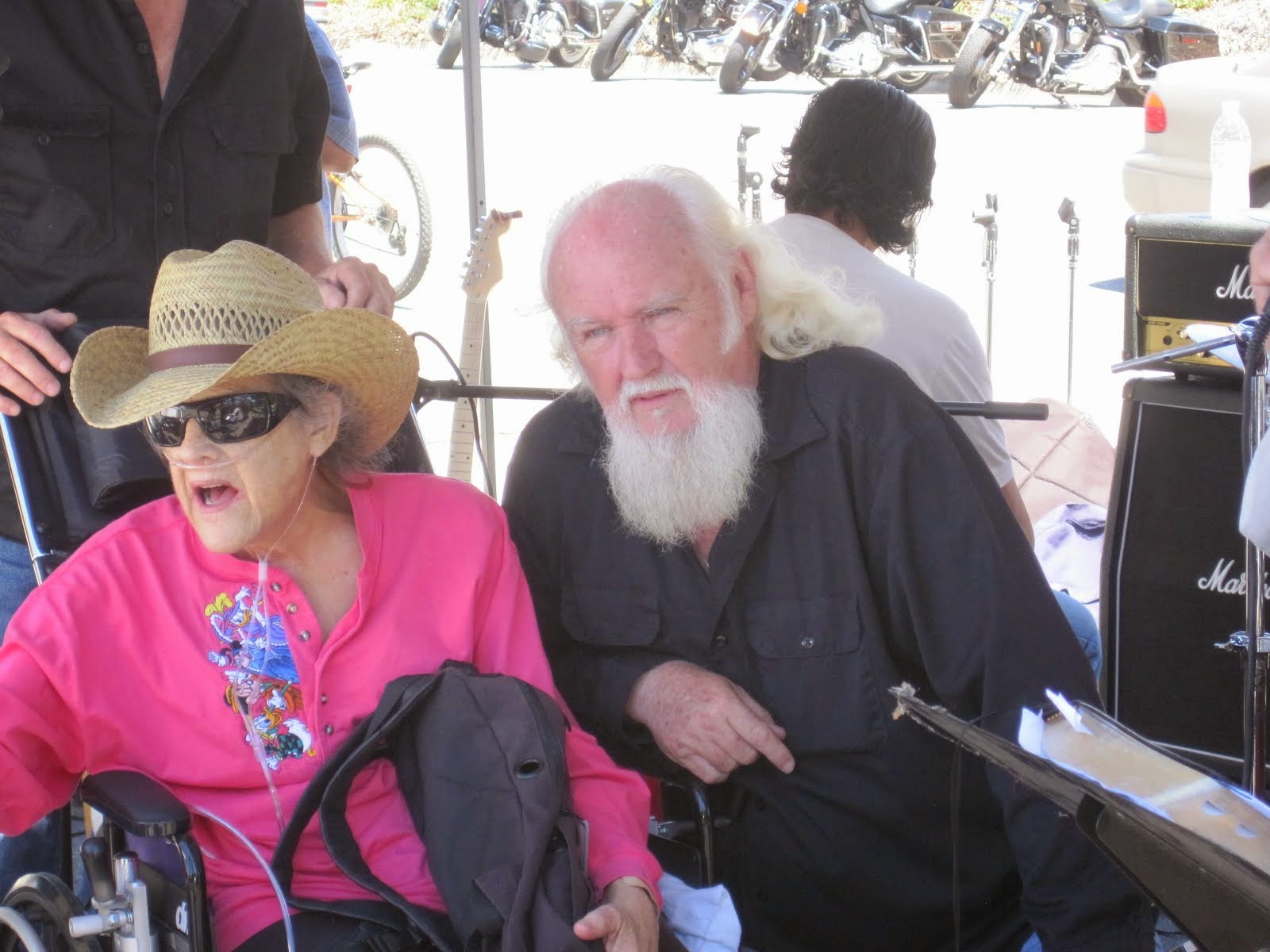OFF THE WIRE
http://www.blogger.com/goog_772843321
CHP releases list of new laws for vehicles, motorists for 2011
Friday, December 31, 2010
Amador County now has its own provision in a state law paving the way to provide access to roadways for small electric cars, also known as Neighborhood Electric Vehicles.
AB584, sponsored by Assemblywoman Alyson Huber, was signed by Gov. Arnold Schwarzenegger Sept. 29, and allows Amador County the same flexibility in designing rules and routes for NEVs as currently allowed in Orange and Placer counties.
Amador Citizens for Transportation Options, a local nonprofit group, solicited Huber's help almost two years ago to help make the desired changes to the existing vehicle code.
NEVs are low-speed vehicles that may be used on state highways under certain conditions. Cities and counties seeking to expand areas where the vehicles may be operated are required to prepare a report to the California Legislature, including a description of the NEV transportation plan, an evaluation of the effectiveness of the plan, and a recommendation as to whether the authorization to establish NEV transportation plans should be expanded statewide.
Additionally, discussions are encouraged between the Legislature, the California Department of Motor Vehicles, and the California Highway Patrol regarding the adoption of a new classification for licensing motorists who use NEVs.
Under the provisions of the new law, Amador County, Amador City, and the cities of Jackson and Sutter Creek, have until Jan. 1, 2015, to submit their initial reports, and must present their full NEV transportation plans by Jan. 1, 2016. NEV operators must also possess a California driver's license and comply with established financial liability requirements.
Jan. 1 also ushers in a handful of other new laws for California's motoring public.
A bill sponsored by Assemblyman Roger Niello lays out age-specific requirements drivers must fulfill to obtain a motorcycle instruction permit. Among new requirements for drivers younger than 21 years of age is the successful completion of a motorcycle safety course administered by the CHP.
New rules to combat a rising tide of motorcycle thefts makes it a misdemeanor to possess, give, or lend any device designed to bypass the factory-installed ignition of a motorcycle in order to start the engine without the manufacturer's key. It will also be illegal to possess any motorcycle ignition or part of motorcycle ignition, with the intent to unlawfully take or drive, or to facilitate the unlawful taking or driving of a motorcycle, without the consent of the owner. Items of hardware, including bolt cutters, electrical tape, wire cutters, wire strippers, or Allen wrenches, with the intent to aid in the unlawful taking or driving of a motorcycle without the consent of the owner, is included in the new prohibitions.
An amended section of California's Vehicle Code will now allow a "video event recorder" to be mounted in a 7-inch square in the lower corner of a vehicle windshield on the passenger side, or a 5-inch square in the lower corner of the vehicle windshield on the driver's side, outside of an airbag deployment zone. It also makes it legal to mount the video event recorder in a 5-inch square in the center uppermost portion of the interior of the windshield. The new law also defines a video event recorder and requires a vehicle equipped with one to have a notice posted in a visible location, which states that a passenger's conversation may be recorded. In addition, this law lays out rules for recording events, notes who the rightful owner of the footage is, and who is entitled to a copy of the recording.
Much like an AMBER Alert, new rules for the activation of the Emergency Alert System for a "Blue Alert" would occur if a law enforcement officer has been killed, suffers serious bodily injury, or is assaulted with a deadly weapon, and the suspect has fled the scene of the offense, if the investigating agency has determined that the suspect poses an imminent threat to the public or other law enforcement personnel.
A Blue Alert will be issued if a detailed description of the suspect's vehicle or license plate is available for broadcast and if authorities determine public dissemination of available information may help avert further harm or accelerate apprehension of a suspect.
Several other miscellaneous vehicle code sections were added or amended to take effect Jan. 1.
Section 667 of the Vehicle Code was added to define a "utility trailer" as a trailer or semi-trailer used solely for the transportation of the user's personal property which cannot be used in commerce, cannot exceed gross weight of 10,000 pounds, but can be used for transportation of livestock.
Section 5201 of the Vehicle Code was amended to require license plates to be mounted parallel to the ground so the characters are upright and display from left to right.
Another code section allowing drivers of vehicles to pass on the right under specified conditions was amended to clarify that it does not prohibit a bicyclist from passing on the right in either a bicycle lane or on a shoulder.
One bill passed by the Legislature and signed by the governor this year doesn't go into effect until Jan. 1, 2012, but is worth highlighting, as it attempts to provide judges with the means to deal with DUI repeat offenders. AB 1601 added language to the vehicle code authorizing courts to order a 10-year revocation of a driver's license if a person has been convicted of three or more DUIs. However, under this new law, a motorist will be allowed to apply for reinstatement of his or her driver's license with the Department of Motor Vehicles after five years if the person installs an "ignition interlock device" in their vehicle. It also allows the DMV to terminate the restricted license if the ID requirements are not met.
New laws outlined in this article are only a partial list of new laws adopted for 2011. For complete information on bills enacted in 2010, refer to the Legislative Counsel website at
http://www.leginfo.ca.gov./
skip to main |
skip to sidebar




Bill & Annie

Art Hall & Rusty


NUFF SAID.......


































































OOHRAH

ONCE A MARINE,ALWAYS A MARINE

GIVING BACK


MOUNT SOLEDAD














BIKINI BIKE WASH AT SWEETWATER










FRIENDS





BILL,WILLIE G, PHILIP










GOOD FRIENDS


hanging out

brothers


GOOD FRIENDS

Good Friends

Hanging Out




Bill & Annie
Art Hall & Rusty
Art Hall & Rusty


NUFF SAID.......



















NUFF SAID......



























Mount Soledad




BALBOA NAVAL HOSPITAL
RUSTY DANNY

ANNIE KO PHILIP

PHILIP & ANNIE

OUT & ABOUT

OOHRAH...

OOHRAH
ONCE A MARINE,ALWAYS A MARINE

ONCE A MARINE,ALWAYS A MARINE
American Soldier Network GIVING BACK

GIVING BACK
CATHY & BILL
PHILIP & DANNY & BILL

MOUNT SOLEDAD
bills today
EMILIO & PHILIP
WATER & POWER
WATER & POWER
bootride2013



BIKINI BIKE WASH AT SWEETWATER







ILLUSION OPEN HOUSE

FRIENDS


GOOD FRIENDS



BILL,WILLIE G, PHILIP









GOOD FRIENDS

GOOD FRIENDS
Friends
- http://www.ehlinelaw.com/losangeles-motorcycleaccidentattorneys/
- Scotty westcoast-tbars.com
- Ashby C. Sorensen
- americansoldiernetwork.org
- blogtalkradio.com/hermis-live
- davidlabrava.com
- emiliorivera.com/
- http://kandymankustompaint.com
- http://pipelinept.com/
- http://womenmotorcyclist.com
- http://www.ehlinelaw.com
- https://ammo.com/
- SAN DIEGO CUSTOMS
- www.biggshd.com
- www.bighousecrew.net
- www.bikersinformationguide.com
- www.boltofca.org
- www.boltusa.org
- www.espinozasleather.com
- www.illusionmotorcycles.com
- www.kennedyscollateral.com
- www.kennedyscustomcycles.com
- www.listerinsurance.com
- www.sweetwaterharley.com

Hanging out

hanging out
Good Friends

brothers
GOOD FRIENDS

EMILIO & SCREWDRIVER

GOOD FRIENDS
Danny Trejo & Screwdriver

Good Friends
Navigation
Welcome to Bikers of America, Know Your Rights!
“THE BIKERS OF AMERICA, THE PHIL and BILL SHOW”,
A HARDCORE BIKER RIGHTS SHOW THAT HITS LIKE A BORED AND STROKED BIG TWIN!
ON LIVE TUESDAY'S & THURDAY'S AT 6 PM P.S.T.
9 PM E.S.T.
CATCH LIVE AND ARCHIVED SHOWS
FREE OF CHARGE AT...
BlogTalkRadio.com/BikersOfAmerica.
Two ways to listen on Tuesday & Thursday
1. Call in number - (347) 826-7753 ...
Listen live right from your phone!
2. Stream us live on your computer: http://www.blogtalkradio.com/bikersofamerica.
A HARDCORE BIKER RIGHTS SHOW THAT HITS LIKE A BORED AND STROKED BIG TWIN!
ON LIVE TUESDAY'S & THURDAY'S AT 6 PM P.S.T.
9 PM E.S.T.
CATCH LIVE AND ARCHIVED SHOWS
FREE OF CHARGE AT...
BlogTalkRadio.com/BikersOfAmerica.
Two ways to listen on Tuesday & Thursday
1. Call in number - (347) 826-7753 ...
Listen live right from your phone!
2. Stream us live on your computer: http://www.blogtalkradio.com/bikersofamerica.
Good Times
Hanging Out

Key Words
- about (3)
- contact (1)
- TENNESSEE AND THUNDER ON THE MOUNTAIN (1)
- thinking (1)
- upcoming shows (2)
Blog Archive
-
▼
2011
(5448)
-
▼
January
(444)
- Hells Angels 29th Annual Florence Prison Run
- New Zealand - Aussie Gangs And Drugs - Prohibition...
- Highway to Heil - How common is Nazi iconography a...
- Bachmann eyes cuts to veterans health benefits
- OREGON PROPOSES DUI CHECKPOINT LEGISLATION
- New Zealand - The police in Porirua say four motor...
- New Jersey - Police survey reveals motorcycle gang...
- New Zealand - Alcohol suspected in motorcycle crash
- Florida - Trial date set in biker fatalities
- Motorcycle ride to benefit Flight 93 memorial
- Prosecutors: 4 witnesses identify suspect in 1982 ...
- Proof Obama wants to continue overspending...... W...
- Sweden - Hells Angels wrap themselves in the law t...
- UK - Bikers band together to help brave Darcie
- Australia - Suspected Comancheros boss to finally ...
- Atlanta, GA - Chief Turner: 'No Decision To Disban...
- New Zealand - Whanganui debates ban on 'outlaw' g...
- Michigan - Woman in critical condition after shoot...
- U.S. - It’s still January but state governments ar...
- Cavity Search on the side of the Road?
- Ocala, FLORIDA - Motorcyclists share hope with Low...
- Profiling Bills to receive hearings by Washington ...
- Australia - Sydney bikie charged with stealing 12 ...
- Operation Home Base. Never Can Say Goodbye. 2 Proj...
- Westmoreland County, PA - 2 sides of Greensburg Sa...
- New Zealand - Turf wars expected as gang sets up..
- Australia - Bikies stopped by cops in Thomastown
- New Zealand - Kiwi police ready to fight Aussie gangs
- No title
- New Zealand - Rebels not welcome here
- "Secret account" motorcycles being returned to dealer
- Australia - Mercanti's partner breaks down while r...
- Canada - Cops? Keep Em Coming, City’s burgeoning ...
- TRAVELS, PAST, PRESENT, FUTURE...........
- REGION: Annual predawn count tracks homelessness l...
- Germany - Rocker War: large raid at the Hells Ange...
- Marine Corps Bases Japan - Ginowan hosts annual Tr...
- Bond set at $2.5M for Round Lake Beach cold case s...
- Va. Beach delegate fails in bid to ban kids on mot...
- Hells Angels Recruiting Heavily in AZ
- OCEANSIDE: Police chief's wife pleads not guilty
- That Old Time Rock and Roll
- Custom motorcycle to be unveiled in Dallas by Gene...
- Delaware - Legislators honor Patriot Guard Riders
- The future ?
- SOUTH DAKOTA: and Around the U.S.
- Court won't hold 'Don't ask, don't tell' lawsuit
- Motorcyclist found dead on roadway in Escondido
- “YO MOMA OBAMA” SUPPORTS DICTATORS AROUND THE WORL...
- Think you can ride a motorcycle?
- UTAH - FBI mistake: Salt Lake County no longer has...
- SOUTH CAROLINA: South Carolina Motorcycle Accident...
- BIKERS USA Illinois Special
- Nebraska Trying To Rip Off Bikers
- May 7th, Second Annual Biker Benefit for Second Ha...
- More from Nebraska, Trying To Rip Off Bikers..
- MMA 2011-2012 Legislative Agenda Announced
- Australia - Ulysses Bikers pizza parking exemption...
- What is going on in Europe
- Illinois
- Reprimanded or removed Judges
- TEXAS: Domestic use of aerial drones by law enforc...
- Missouri Motorcycle Helmet Law Under Attack
- WASHINGTON DC: H.R.259 -- Michael Jon Newkirk Tran...
- Australia - No apology for bikie ram raid
- Washington DC - Rehberg introduces Kids Just Want ...
- Chesterfield, VA - Chesterfield police take eviden...
- Motorcyclists gather at Capitol to lobby represent...
- Biker gang leader ‘Scarface’ sent to prison for 37...
- Australia - Police discount threat of Blacktown bi...
- Australia - Bikie figures don't lie, says Rann
- Court hears of bikie brawl 'amnesia'
- Motorcycle Safety News
- Fish Aid Music Festival - Press kit
- Canada - OTTAWA - Rallies planned to mark end of A...
- BLADEN COUNTY, NC - Five arrested for running an u...
- Australia SA Labor minister Paul Holloway attacks ...
- They Be Clubbin'
- Sentence is appealed
- LOCAL 6 "E-MAIL BLAST"
- Motorcycle flag placement
- Senate's first budget attempt spreads painful cuts...
- Nebraska Motorcycle Safety fund may get the ax!!
- Texas
- Safety coalition urges Colorado lawmakers to tough...
- "HEADS-UP VA VETS WHO CONCEAL CARRY...SERIOUS!
- Ex-Calif. sheriff surrenders to begin prison term
- Why isn't this illegal?
- U.S.: Gun raids show cartels at work in Arizona
- RISKS ON ROADS, Study: Roads are safer in urban a...
- Feds Drop Plan to Change Workplace Noise Standards
- Australia -Hells Angel faces possible jail term
- Australia - Bikie comments haunt SA police chief
- Virginia County Settles with Victim's Family for $2M
- NEW YORK LEGISLATION UPDATES: motorcycles
- facebook page "Ca businessed that discriminate aga...
- Question is.... what represents "Probable Cause"
- Motorcyclists Ask Missouri Senators to Scrap Helme...
- Australia - Bikies aren't so bad, says Commissione...
- Seattle, WA - Detective from 2008 shooting incide...
-
▼
January
(444)
Bikers of America, Know Your Rights!... Brought to you by Phil and Bill
Philip, a.k.a Screwdriver, is a proud member of Bikers of Lesser Tolerance, and the Left Coast Rep
of B.A.D (Bikers Against Discrimination) along with Bill is a biker rights activist and also a B.A.D Rep, as well, owner of Kennedy's Custom Cycles
